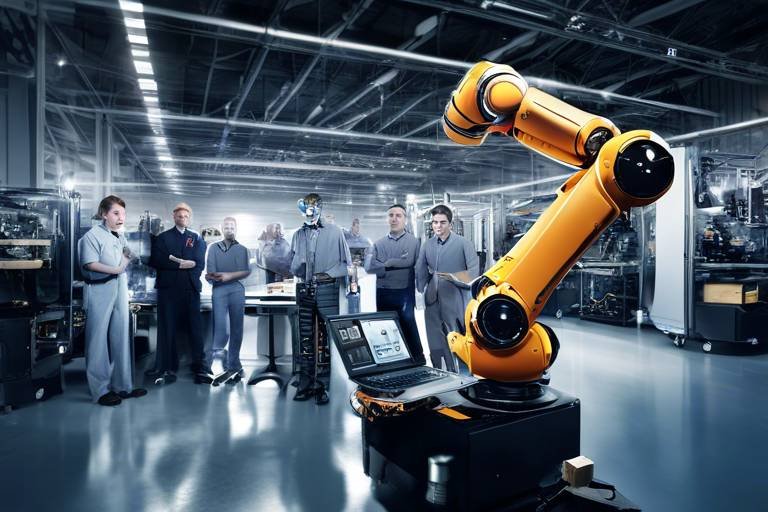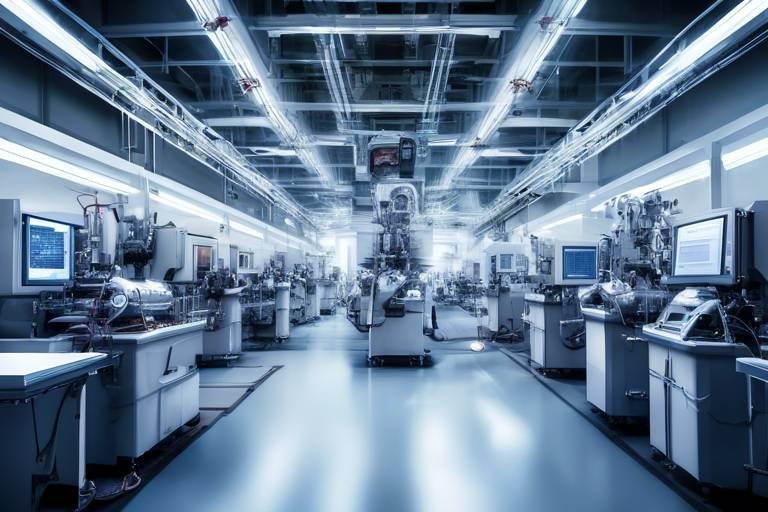How Robotics is Changing the Face of Manufacturing
In today's fast-paced world, the manufacturing industry is undergoing a radical transformation, and at the heart of this revolution lies robotics. Gone are the days when factories relied solely on human labor for production. With the advent of advanced robotics technology, manufacturers are now able to streamline their processes, enhance productivity, and improve quality control. But what does this mean for the future of manufacturing? How are robots reshaping the way we produce goods? This article delves into the multifaceted impact of robotics on manufacturing, exploring its evolution, benefits, challenges, and future trends.
The journey of robotics in the manufacturing sector is nothing short of fascinating. It all began in the mid-20th century when the first industrial robots were introduced. These early machines were primarily used for repetitive tasks, such as welding and assembly. Fast forward to today, and we see a remarkable evolution in robotics technology. Innovations such as artificial intelligence, machine learning, and advanced sensors have paved the way for robots to perform more complex tasks with greater efficiency. Key milestones, such as the introduction of the first programmable robot in 1956 and the development of collaborative robots (cobots) in recent years, have significantly shaped the landscape of modern manufacturing.
So, what are the tangible benefits that robotics brings to the manufacturing table? The advantages are numerous and compelling. First and foremost, robotics enhances overall efficiency. Imagine a factory where robots work tirelessly, day and night, without fatigue. This leads to increased production rates and the ability to meet growing consumer demand. Additionally, robots excel in precision and quality control. For instance, when a robot is tasked with assembling components, it can do so with a level of accuracy that far surpasses human capability. This precision not only reduces errors but also minimizes waste, ensuring that resources are used effectively.
When it comes to manufacturing, precision is paramount. Robots are designed to execute tasks with high levels of accuracy, which leads to better quality control throughout the production process. For example, in the automotive industry, robots can assemble parts with pinpoint accuracy, significantly reducing the chances of defects. This enhanced precision translates into reduced errors and waste, ultimately benefiting the bottom line.
Another key advantage of robotics is the consistency they provide. Unlike human workers, who may have off days or varying levels of performance, robots deliver a uniform output quality. This consistency is crucial for maintaining standards in manufacturing, especially in industries where even minor variations can lead to significant issues. By ensuring that every product meets the same high standards, manufacturers can build trust with their customers and enhance their brand reputation.
Human error is an inevitable part of any production process. However, by automating tasks, robots significantly reduce the potential for mistakes that can lead to costly defects. This reduction in human error not only saves manufacturers money but also ensures that the final products are of the highest quality. In essence, robotics acts as a safeguard against the unpredictability of human performance.
In the competitive world of manufacturing, speed is of the essence. Robotics allows for faster production rates, enabling manufacturers to keep pace with growing demand while maintaining quality. With robots handling repetitive tasks, human workers can focus on more complex and value-added activities. This shift not only boosts overall productivity but also enhances a company's competitiveness in the market.
While the benefits of robotics in manufacturing are clear, it's essential to acknowledge the challenges that come with implementation. One of the primary concerns is the high initial investment required to acquire and integrate robotic systems. This upfront cost can be a significant barrier for many manufacturers, particularly small and medium-sized enterprises.
The financial considerations of investing in robotics are not to be taken lightly. Manufacturers must carefully evaluate the cost of robotic systems, maintenance, and potential downtime during the integration process. However, it's crucial to view this investment as a long-term strategy that can lead to substantial returns through increased efficiency and reduced labor costs.
As robotics reshape job roles, the workforce must adapt to new technologies. This shift highlights the importance of training and reskilling workers to thrive alongside automation. Manufacturers need to invest in employee development to ensure that their teams are equipped with the skills necessary to operate and collaborate with robotic systems effectively.
Looking ahead, the future of robotics in manufacturing is bright, with several emerging trends set to revolutionize the industry further. Advancements in AI and machine learning are paving the way for smarter, more autonomous robots that can make real-time decisions based on data analysis.
One exciting trend is the rise of collaborative robots, or cobots. These machines are designed to work alongside human workers, enhancing productivity without replacing jobs. Cobots can assist with tasks such as assembly and packaging, allowing workers to focus on more complex duties. This collaboration fosters a more efficient workflow and creates a harmonious relationship between humans and machines.
The integration of AI into robotic systems is transforming decision-making processes in manufacturing. With AI, robots can analyze data, learn from experiences, and adapt their operations accordingly. This capability not only enhances the efficiency of manufacturing processes but also opens up new possibilities for innovation and product development.
- What are the main benefits of using robots in manufacturing? Robots increase efficiency, enhance precision, reduce human error, and allow for faster production rates.
- Are there any challenges associated with implementing robotics? Yes, challenges include high initial costs and the need for workforce adaptation through training and reskilling.
- What is the role of collaborative robots? Collaborative robots are designed to work alongside human workers, enhancing productivity without replacing jobs.
- How does AI improve robotic systems? AI allows robots to analyze data, learn from experiences, and adapt their operations, enhancing efficiency and decision-making.

The Evolution of Robotics in Manufacturing
The journey of robotics in manufacturing is nothing short of fascinating. It all began in the 1950s when the first industrial robot, Unimate, was introduced. This groundbreaking innovation marked the start of a new era in production processes. Imagine a world where machines could take over repetitive and dangerous tasks, freeing human workers to focus on more complex and creative responsibilities. As technology advanced, so did the capabilities of these robots.
Throughout the decades, we witnessed significant milestones that shaped the robotics landscape. In the 1960s, the introduction of programmable logic controllers (PLCs) allowed robots to perform tasks with greater flexibility. By the 1980s, the use of robots in automotive manufacturing became widespread, revolutionizing the industry. Companies like General Motors and Toyota embraced automation, realizing that robots could enhance productivity and consistency.
Fast forward to the 21st century, and we are now in the age of sophisticated robotics. Today’s robots are equipped with advanced sensors, artificial intelligence, and machine learning capabilities. They can adapt to their surroundings and learn from their experiences, making them more efficient than ever before. For instance, collaborative robots, or cobots, are designed to work alongside human operators, enhancing productivity without the fear of job displacement. This evolution exemplifies how robotics is not just about replacing human labor but augmenting it.
To further illustrate this evolution, let’s take a look at the key phases in the development of robotics in manufacturing:
| Decade | Key Innovations | Impact on Manufacturing |
|---|---|---|
| 1950s | Introduction of Unimate | First industrial robot used for material handling |
| 1960s | Programmable Logic Controllers (PLCs) | Increased flexibility and control in manufacturing processes |
| 1980s | Robots in Automotive Industry | Widespread adoption leading to enhanced productivity |
| 2000s | AI and Machine Learning Integration | Robots capable of learning and adapting to tasks |
| 2020s | Collaborative Robots (Cobots) | Working alongside humans, enhancing productivity |
As we look to the future, it’s clear that the evolution of robotics in manufacturing is far from over. With ongoing advancements in technology, we can expect even more transformative changes. The integration of AI and machine learning into robotic systems will continue to enhance their capabilities, making them indispensable in modern manufacturing environments. It’s an exciting time to be part of this industry, as we witness the unfolding of a new chapter in the story of robotics.
- What is the first industrial robot? The first industrial robot, Unimate, was introduced in the 1950s and revolutionized manufacturing processes.
- How have robots changed manufacturing? Robots have increased efficiency, precision, and consistency while reducing human error in manufacturing processes.
- What are collaborative robots (cobots)? Cobots are designed to work alongside human workers, enhancing productivity without replacing jobs.
- What role does AI play in modern robotics? AI enhances the decision-making capabilities of robots, allowing them to learn and adapt to their tasks more effectively.

Benefits of Robotics in Manufacturing
The integration of robotics in manufacturing has ushered in a new era of efficiency and innovation. As industries strive to keep pace with rapidly changing demands, robots have emerged as crucial assets that enhance productivity while ensuring quality. One of the most significant benefits of robotics is the increased efficiency they bring to production lines. Robots can operate continuously, without the need for breaks or downtime, allowing manufacturers to maximize output. Imagine a factory where machines work tirelessly, producing goods at a speed and accuracy that humans simply can't match. This relentless pace not only meets consumer demand but also boosts overall profitability.
Another advantage of robotics is their enhanced precision and quality control. Unlike human workers, robots perform tasks with incredible accuracy, which significantly reduces the likelihood of errors. This precision is vital in industries where even the smallest mistake can lead to costly defects. For instance, in the automotive sector, a tiny misalignment can result in a vehicle that doesn't meet safety standards. With robotic systems in place, manufacturers can ensure that every component is produced to exact specifications, leading to fewer returns and higher customer satisfaction.
Robots excel at executing repetitive tasks with unwavering consistency. This consistency translates into superior quality control, as robotic systems maintain uniformity in production. When human workers perform repetitive tasks, variations are inevitable due to fatigue or distraction. However, robots operate with the same level of precision, regardless of the time of day or the number of cycles completed. This reliability is crucial for industries that require strict adherence to quality standards.
Moreover, the consistency provided by robots minimizes variations that can occur in manual processes. When a product is manufactured with consistent quality, it builds brand trust and loyalty among consumers. Think about it: would you prefer to buy a product that varies in quality from one batch to another, or one that consistently meets your expectations? The latter is what robotics can offer, ensuring that every product that leaves the factory floor is of the same high standard.
By automating tasks, robots significantly reduce the potential for human error. This reduction is critical in manufacturing, where mistakes can lead to safety hazards or financial losses. For example, in electronics manufacturing, a single misstep in assembly can render an entire batch of products defective. With robots taking over these tasks, the risk of such costly errors diminishes, leading to safer work environments and better financial outcomes.
Speed is another area where robotics shines. In the competitive landscape of manufacturing, being able to produce goods quickly can be the difference between success and failure. Robotics allows manufacturers to ramp up production rates significantly, enabling them to meet growing demand without sacrificing quality. Imagine a scenario where a manufacturer can produce twice as many units in the same timeframe simply by integrating robotic systems. This kind of efficiency not only boosts the bottom line but also enhances a company's ability to respond to market changes swiftly.
In summary, the benefits of robotics in manufacturing are profound and far-reaching. From increased efficiency and precision to enhanced quality control and reduced human error, the advantages are clear. As we move forward, embracing robotics is not just a choice; it's becoming a necessity for manufacturers aiming to thrive in an ever-evolving market.
- What industries benefit the most from robotics? Robotics is widely used in industries such as automotive, electronics, food and beverage, and pharmaceuticals, where precision and efficiency are paramount.
- Are robots replacing human jobs? While robots can automate certain tasks, they also create new job opportunities in areas like programming, maintenance, and oversight.
- What is the initial cost of implementing robotics? The initial investment can be high, but the long-term savings and efficiency gains often justify the expense.
- How do robots improve workplace safety? By taking over dangerous tasks, robots reduce the risk of accidents and injuries in manufacturing environments.

Enhanced Precision and Quality Control
In the world of manufacturing, precision and quality control are not just buzzwords; they are the backbone of successful production processes. The introduction of robotics into manufacturing has revolutionized how these two critical aspects are approached. Imagine a factory where every product is crafted with the same meticulous attention to detail, regardless of the time of day or the number of units being produced. This is the magic of robotics!
Robots are engineered to perform tasks with an accuracy that is often beyond human capability. For example, when assembling intricate components, a robotic arm can execute movements with a precision of just a few microns. This level of accuracy significantly reduces the likelihood of errors that can lead to defective products. As a result, companies can enjoy a dramatic decrease in waste, which not only saves money but also contributes to a more sustainable manufacturing process.
Furthermore, the consistency offered by robotic systems is unparalleled. Unlike human workers, who may experience fatigue or distraction, robots maintain a steady performance level throughout their operational lifespan. This reliability ensures that every item produced meets the same high standards, which is crucial for industries where even minor variations can result in significant quality issues. For instance, in the automotive sector, a slight deviation in part dimensions can lead to assembly problems and costly recalls.
To illustrate the impact of robotics on precision and quality control, consider the following table:
| Aspect | Robotic Systems | Manual Processes |
|---|---|---|
| Accuracy | ±0.01 mm | ±0.5 mm |
| Production Consistency | Consistent output | Varied output |
| Error Rate | 0.1% | 5% |
As seen in the table, the stark differences in accuracy, consistency, and error rates highlight the advantages of integrating robotics into manufacturing processes. With robots, manufacturers can not only elevate their quality standards but also build a reputation for reliability that can lead to increased customer satisfaction and loyalty.
Moreover, the implementation of robotics allows for real-time monitoring and data analysis, which enhances quality control efforts. By utilizing sensors and advanced algorithms, robotic systems can detect anomalies during production. If a defect is identified, the system can either alert operators or automatically adjust parameters to correct the issue on the fly. This proactive approach to quality control minimizes downtime and ensures that only products meeting the required specifications reach the market.
In summary, the integration of robotics in manufacturing brings about enhanced precision and quality control, leading to improved productivity and reduced waste. As industries continue to evolve, these advancements will play a pivotal role in shaping the future of manufacturing, ensuring that quality remains at the forefront of production processes.
- How do robots improve quality control in manufacturing? Robots enhance quality control by executing tasks with high precision, reducing errors, and maintaining consistent output quality.
- What industries benefit the most from robotic precision? Industries such as automotive, electronics, and pharmaceuticals greatly benefit from the precision and quality control that robotics provide.
- Can robots detect defects during production? Yes, many robotic systems are equipped with sensors and algorithms that allow them to detect defects in real-time, ensuring high-quality output.

Consistency in Production
When it comes to manufacturing, consistency is the name of the game. Imagine a world where every product rolling off the assembly line is identical, where quality is not just a goal but a guarantee. This is where robotics truly shines. Robotic systems are designed to perform tasks with unwavering precision, ensuring that every item produced meets the established standards. Unlike human workers, who may experience fatigue or distraction, robots maintain their performance level throughout their operational lifespan, leading to a remarkable reduction in variability.
In traditional manufacturing settings, fluctuations in output quality can arise from various factors, including human error, equipment malfunctions, and environmental conditions. However, with robotics, manufacturers can implement a consistent production process that minimizes these variations. For instance, a robot programmed to assemble components will execute the same movements repeatedly with pinpoint accuracy, which not only enhances product quality but also builds trust with consumers who rely on the integrity of the brand.
Moreover, the consistency provided by robotic systems translates into significant cost savings over time. When products are manufactured to precise specifications, the likelihood of defects decreases dramatically. This leads to fewer returns and reworks, which can be costly and time-consuming. A study conducted by the Institute of Robotics and Automation found that companies that integrated robotics into their production lines saw a 30% reduction in defect rates compared to those relying solely on manual labor.
To illustrate the impact of robotics on production consistency, consider the following table that compares traditional manufacturing processes with robotic systems:
| Aspect | Traditional Manufacturing | Robotic Manufacturing |
|---|---|---|
| Quality Control | Variable, prone to human error | High precision, minimal errors |
| Production Speed | Inconsistent, affected by worker fatigue | Consistent, operates continuously |
| Cost Efficiency | Higher due to defects and rework | Lower due to reduced waste |
In addition to quality and cost benefits, the consistency achieved through robotics fosters a culture of continuous improvement within manufacturing environments. Companies can analyze production data with greater accuracy, identifying areas for enhancement and implementing changes swiftly. This agility in responding to market demands ensures that manufacturers remain competitive in an ever-evolving landscape.
In summary, the offered by robotic systems is a game-changer for the manufacturing industry. It not only enhances product quality and reduces costs but also positions companies to adapt quickly to changing market conditions. As we move forward, embracing these technologies will be essential for any manufacturer aiming to thrive in the modern economy.
- How do robots improve production consistency?
Robots perform tasks with high precision and do not experience fatigue, resulting in uniform quality across all products. - What are the cost benefits of using robotics?
By reducing defects and waste, companies can lower their overall production costs, leading to increased profitability. - Can robots replace human workers?
While robots can automate many tasks, they are best used to complement human workers, enhancing productivity rather than replacing jobs.

Reduction of Human Error
In the fast-paced world of manufacturing, human error can be a significant roadblock, leading to costly mistakes and product defects. Imagine a scenario where a small oversight during assembly results in a faulty product that not only fails quality checks but also tarnishes the brand's reputation. This is where robotics steps in as a game-changer. By automating repetitive tasks and implementing precise programming, robots drastically reduce the likelihood of such errors.
Robots, unlike humans, do not suffer from fatigue, distractions, or emotional fluctuations. They work tirelessly, maintaining a consistent level of performance throughout their operational hours. For instance, a robot tasked with assembling intricate components can perform its duties with remarkable accuracy, ensuring that each piece fits perfectly without the variation that might occur with human workers. This level of precision is crucial, especially in industries like electronics and automotive manufacturing, where even the slightest deviation can lead to significant failures.
Furthermore, the integration of advanced sensors and machine learning algorithms allows robotic systems to continually improve their performance. They can learn from past mistakes, adapt to new tasks, and even predict potential errors before they occur. This proactive approach to error reduction not only enhances product quality but also streamlines the entire manufacturing process.
To illustrate the impact of reducing human error through robotics, consider the following table that compares error rates in traditional manufacturing versus robotic manufacturing:
| Manufacturing Method | Average Error Rate (%) | Cost of Errors ($) |
|---|---|---|
| Traditional Manufacturing | 5-10% | $50,000 - $100,000 |
| Robotic Manufacturing | 0.1-1% | $1,000 - $10,000 |
As the table indicates, the shift from traditional to robotic manufacturing can lead to a dramatic decrease in error rates and associated costs. This not only improves the bottom line for manufacturers but also enhances customer satisfaction, as products are delivered with higher quality assurance.
In conclusion, the reduction of human error through robotics is not just about improving efficiency; it’s about creating a more reliable manufacturing environment. As industries continue to embrace automation, the benefits of fewer errors will resonate throughout the supply chain, ultimately leading to greater innovation and success in the manufacturing sector.
- What are the main benefits of using robots in manufacturing?
Robots enhance efficiency, precision, and reduce human error, leading to higher quality products and lower costs. - How do robots improve quality control?
Robots perform tasks with high accuracy and consistency, minimizing variations and defects in the production process. - Are there any downsides to implementing robotics?
Yes, challenges include high initial costs and the need for skilled personnel to manage and maintain robotic systems. - Will robots replace human jobs in manufacturing?
While some jobs may be displaced, robots are more likely to change job roles, requiring workers to adapt and reskill.
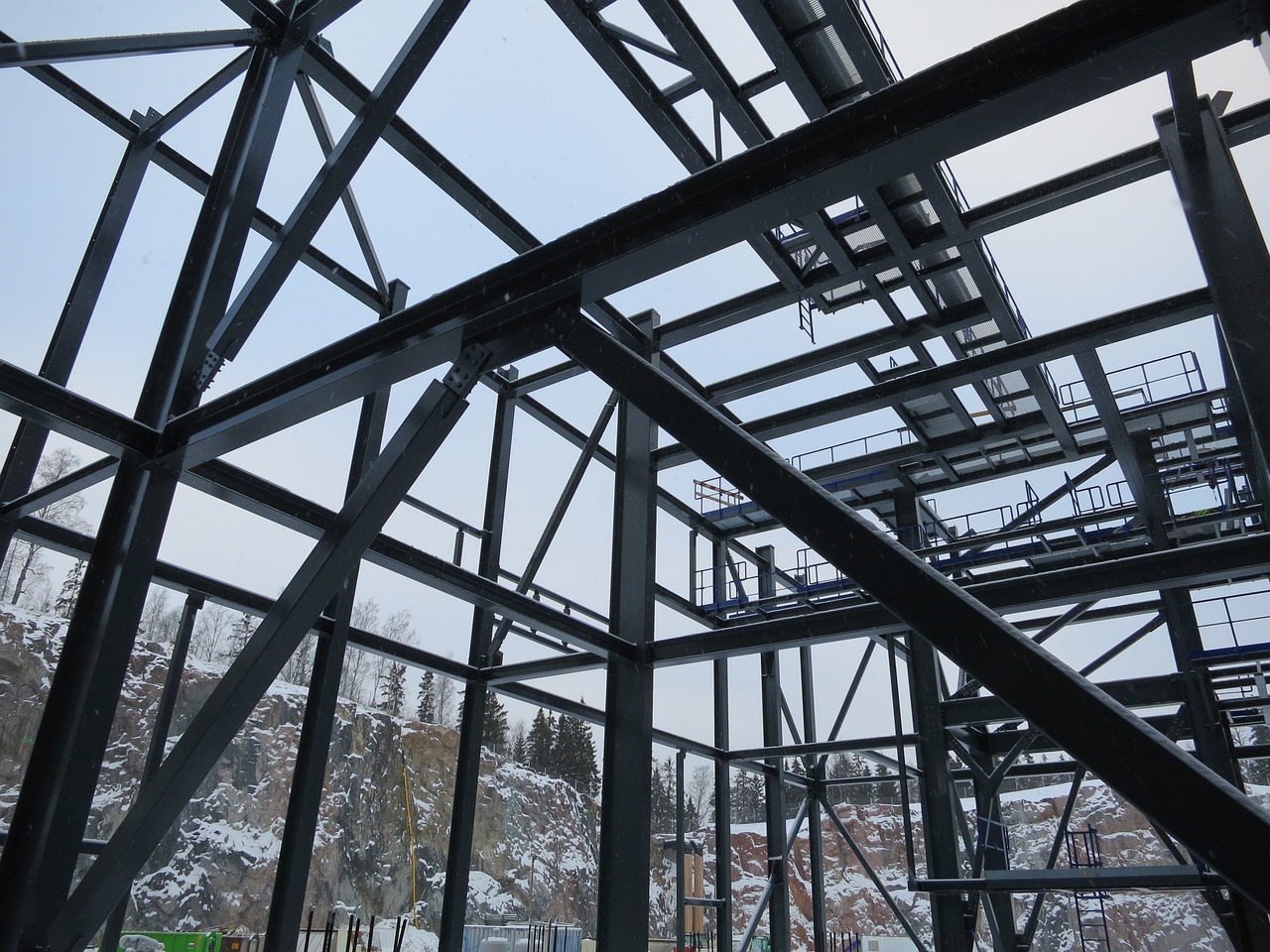
Increased Production Speed
When it comes to manufacturing, speed is everything. In today's fast-paced market, companies are constantly striving to meet growing consumer demands while maintaining quality. This is where robotics truly shines. By integrating robotic systems into production lines, manufacturers can achieve unprecedented levels of speed. Imagine a factory floor where machines work tirelessly, executing tasks at lightning speed—this is not just a dream; it's a reality for many businesses today.
Robots can operate continuously without fatigue, allowing for round-the-clock production. This capability means that while human workers might need breaks, rest, or shifts, robots can keep going, ensuring that production never stops. For instance, a robotic arm can assemble parts at a rate that far surpasses human capability, completing tasks in a fraction of the time. This increased speed translates directly into higher output, which is crucial for companies looking to scale their operations.
To put this into perspective, consider the following table that compares the production speeds of robotic systems versus manual labor:
| Task | Robotic Speed (units/hour) | Human Speed (units/hour) |
|---|---|---|
| Assembly Line Work | 120 | 40 |
| Packaging | 200 | 70 |
| Quality Inspection | 300 | 100 |
As you can see, the difference is staggering. Not only do robots work faster, but they also maintain a level of precision that is often unattainable by human workers. This ability to increase production speed without sacrificing quality is a game-changer for manufacturers. Additionally, as robots are programmed to perform specific tasks, they can be optimized for efficiency, further enhancing their speed and productivity.
Moreover, the integration of robotics in manufacturing allows for flexibility in production schedules. With robots, manufacturers can quickly adapt to changes in demand or product design, allowing them to pivot and produce different products without significant downtime. This agility is essential in a market where consumer preferences can shift rapidly.
However, it's important to note that while robots significantly boost production speed, they also create a need for strategic planning. Companies must carefully analyze their production processes to ensure that the integration of robotics aligns with their overall business goals. This includes considering factors such as the cost of implementation, maintenance, and the training required for staff to work alongside these machines.
In conclusion, the impact of robotics on production speed is profound. As manufacturers continue to embrace automation, the potential for increased efficiency and productivity becomes limitless. The future of manufacturing is not just about keeping up with demand but about exceeding it, and robotics is at the forefront of this transformation.
- How do robots increase production speed? Robots can operate continuously and perform tasks faster than humans, leading to higher output.
- Are there specific industries that benefit more from robotic automation? Yes, industries such as automotive, electronics, and consumer goods frequently utilize robotics for increased efficiency.
- What are the initial costs associated with implementing robotics? The upfront costs can be significant, including the purchase of robotic systems and the necessary training for staff.
- Can robots work alongside human workers? Absolutely! Many modern robotic systems are designed to collaborate with humans, enhancing productivity without replacing jobs.
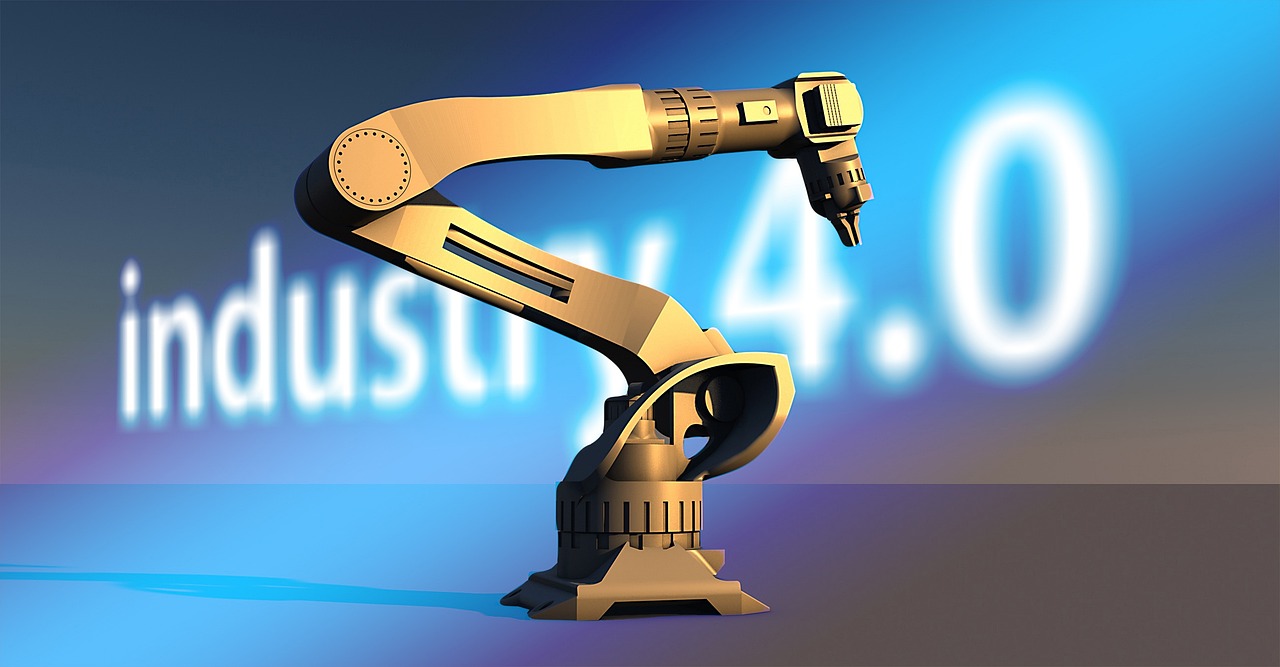
Challenges of Implementing Robotics
While the integration of robotics in manufacturing presents a plethora of benefits, it is not without its challenges. Many manufacturers find themselves at a crossroads when considering the adoption of robotic systems. One of the most significant hurdles is the high initial investment required to acquire and implement these advanced technologies. Robots can be expensive, not just in terms of purchase price but also due to the costs associated with installation, maintenance, and necessary upgrades. Manufacturers must evaluate whether the long-term gains in efficiency and productivity will outweigh these initial costs.
Moreover, the need for skilled personnel cannot be understated. As robots take over more complex tasks, the demand for workers who can operate and maintain these systems grows. This shift requires a workforce that is not only technically savvy but also adaptable to new technologies. Manufacturers often face the daunting task of retraining existing employees or hiring new staff who possess the necessary skills. This can lead to a skills gap in the labor market, where there are not enough qualified individuals to fill the roles created by robotic automation.
Another challenge that cannot be ignored is the potential for job displacement. As robots take on more roles traditionally held by humans, there is a legitimate concern about job security among the workforce. This fear can create resistance to change, making it difficult for companies to implement new technologies. It's crucial for manufacturers to address these concerns through transparent communication and by offering training programs that help workers transition into new roles that complement robotic systems.
In addition to these challenges, manufacturers must also consider the integration of robotics with existing systems. This requires careful planning and execution to ensure that new robotic systems work seamlessly with current production lines and workflows. Disruptions during this integration phase can lead to temporary declines in productivity, which can be detrimental to a business's bottom line.
To summarize, the challenges of implementing robotics in manufacturing are multifaceted. From high initial investments and the need for skilled personnel to concerns about job displacement and integration with existing systems, manufacturers must navigate a complex landscape. However, with careful planning and a proactive approach, these challenges can be addressed effectively, paving the way for a more efficient and productive manufacturing environment.
- What are the main challenges of implementing robotics in manufacturing?
The main challenges include high initial investment costs, the need for skilled personnel, job displacement concerns, and the integration of robotics with existing systems.
- How can manufacturers overcome the skills gap associated with robotics?
Manufacturers can invest in training programs for existing employees and seek to hire individuals with the necessary technical skills to operate and maintain robotic systems.
- Will robots completely replace human workers in manufacturing?
While robots will take over certain tasks, they are more likely to complement human workers rather than completely replace them, especially in roles that require creativity and critical thinking.
- What is the financial return on investing in robotics?
Although the initial investment can be substantial, many manufacturers find that the long-term gains in efficiency, productivity, and quality control can lead to a significant return on investment.

High Initial Investment
When it comes to integrating robotics into manufacturing, one of the most significant hurdles is the required to acquire and implement these advanced systems. It's no secret that robotic technology can come with a hefty price tag. Manufacturers often find themselves facing costs that can range from tens of thousands to millions of dollars, depending on the complexity and scale of the systems they wish to deploy. This financial burden can be daunting, especially for small to medium-sized enterprises (SMEs) that may not have the capital readily available.
Moreover, the initial investment isn't just about purchasing the robots themselves. Manufacturers must also consider the costs associated with installation, maintenance, and training. For instance, integrating robots into existing workflows often requires significant modifications to production lines, which can incur additional expenses. Furthermore, ongoing maintenance is essential to ensure that these machines operate at peak efficiency, and this too adds to the overall cost.
To illustrate the various components of the initial investment, let’s take a look at the following table:
| Cost Component | Estimated Cost Range |
|---|---|
| Robotic System Purchase | $20,000 - $1,000,000+ |
| Installation and Setup | $5,000 - $100,000 |
| Maintenance (Annual) | $2,000 - $50,000 |
| Training for Staff | $1,000 - $10,000 |
As you can see, the costs can stack up quickly, making it crucial for manufacturers to conduct a thorough cost-benefit analysis before diving headfirst into automation. This analysis should not only take into account the immediate financial implications but also the potential long-term savings and productivity gains that robotics can offer. After all, while the initial investment might seem overwhelming, the return on investment (ROI) can be substantial if the integration is executed effectively.
However, it’s not just about the numbers on a balance sheet. Manufacturers must also consider the strategic implications of investing in robotics. Are they prepared to embrace the changes that come with automation? Will they have the necessary infrastructure to support these advanced systems? These questions are critical, as they can ultimately determine the success or failure of such an investment.
In conclusion, while the in robotics can be a significant barrier to entry for many manufacturers, it is essential to weigh these costs against the potential for increased efficiency, reduced operational costs, and enhanced competitiveness in the market. As technology continues to evolve and become more accessible, the landscape of manufacturing is changing, and those who can navigate the financial challenges of automation may very well find themselves ahead of the curve.
- What are the main costs associated with implementing robotics in manufacturing?
Costs include the purchase of robotic systems, installation, maintenance, and training for staff. - How can manufacturers justify the high initial investment in robotics?
Manufacturers can justify the investment by considering the long-term savings, efficiency gains, and increased productivity that robotics can provide. - Are there any financing options available for small manufacturers looking to invest in robotics?
Yes, many financial institutions offer loans and leasing options specifically tailored for technology investments, including robotics.

Workforce Adaptation
As the manufacturing landscape evolves with the integration of robotics, has become a crucial topic of discussion. The rise of robotic systems is not just about machines taking over tasks; it’s about redefining the roles of human workers in a way that enhances overall productivity and job satisfaction. Imagine a factory floor where robots handle the repetitive and physically demanding tasks, freeing up human workers to engage in more strategic and creative roles. This shift requires a paradigm change in how we view work and the skills necessary to thrive in this new environment.
One of the primary challenges in this adaptation process is ensuring that workers are equipped with the necessary skills to collaborate effectively with robotic systems. Companies are now recognizing the importance of training and reskilling their workforce. This involves not only teaching employees how to operate new technologies but also fostering a culture of continuous learning. For instance, organizations may implement training programs that cover:
- Basic robotics operations
- Programming and troubleshooting robotic systems
- Data analysis and interpretation
- Safety protocols when working alongside robots
Such training initiatives can significantly reduce the anxiety many workers feel about job security in the face of automation. By empowering employees with new skills, companies can create a more adaptable workforce that is ready to embrace technological advancements rather than fear them. Furthermore, this approach can lead to improved job satisfaction, as employees find themselves engaged in more meaningful work that leverages their unique human capabilities.
Additionally, the collaboration between humans and robots—often referred to as human-robot collaboration (HRC)—is becoming increasingly common. This model not only enhances productivity but also creates a safer work environment. For example, robots can take on hazardous tasks, reducing the risk of injury for human workers. This symbiotic relationship can lead to a more harmonious workplace where both robots and humans complement each other's strengths.
However, the transition to this new working model is not without its challenges. Companies must address potential resistance from employees who may feel threatened by automation. Open communication is key; management should actively involve employees in discussions about the changes and the benefits of robotics. By fostering a transparent environment, companies can alleviate fears and encourage a more positive outlook on the future of work.
In conclusion, is not just a matter of training; it's about creating a culture that embraces change and innovation. As the manufacturing sector continues to evolve, the ability of workers to adapt will be a significant determinant of a company's success. By investing in their workforce, companies can ensure that they remain competitive in an increasingly automated world.
- What skills are most important for workers in an automated manufacturing environment?
Workers should focus on developing technical skills related to robotics, data analysis, and problem-solving, alongside soft skills like communication and teamwork. - How can companies ensure their employees feel secure about job displacement?
By providing training programs and clear communication about the benefits of automation, companies can help employees see the value of adapting to new roles. - What role do collaborative robots (cobots) play in workforce adaptation?
Cobots are designed to work alongside human workers, enhancing productivity without replacing jobs, thereby facilitating a smoother transition into automated processes.
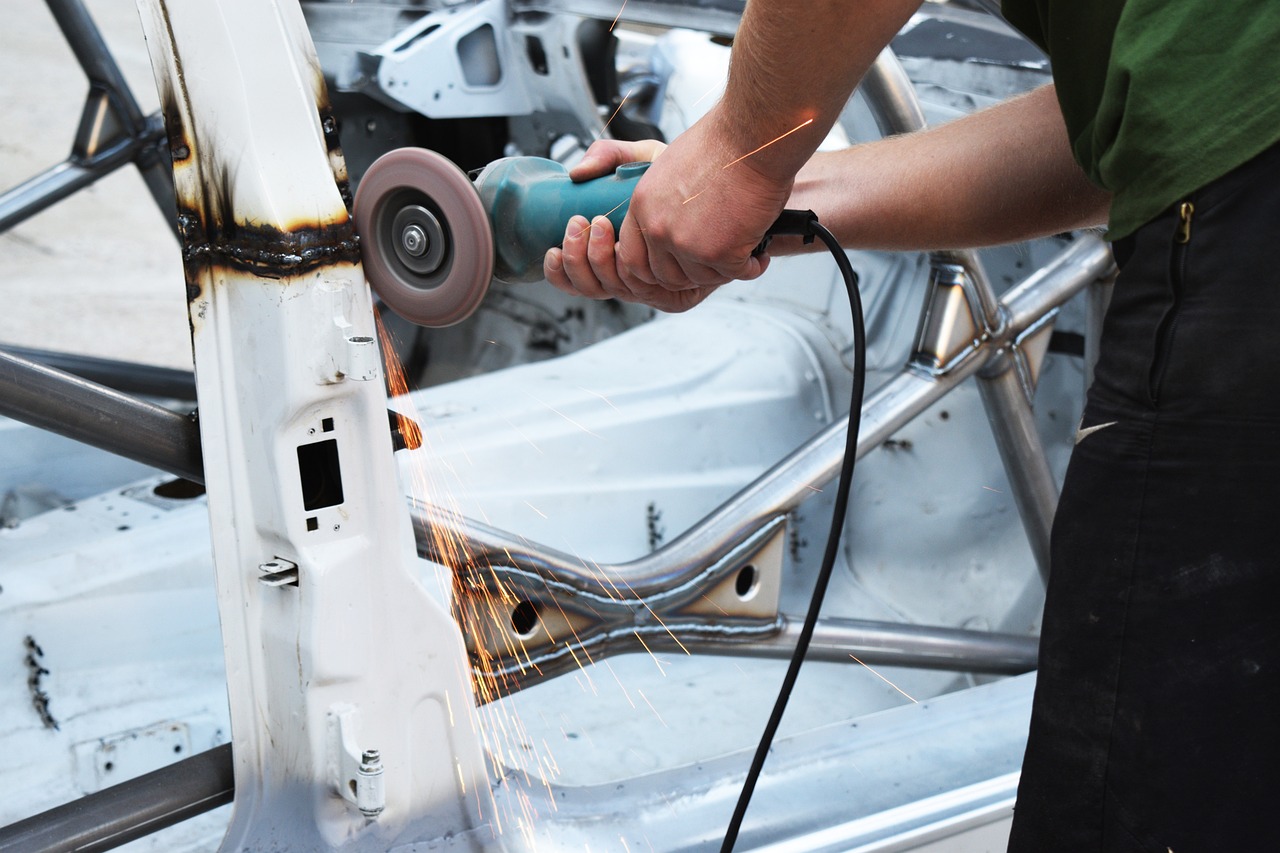
Future Trends in Robotics for Manufacturing
The future of robotics in manufacturing is not just a fleeting trend; it's a revolution poised to redefine how we think about production. With advancements in technology, we are witnessing a shift that combines robotics with cutting-edge innovations like artificial intelligence (AI) and machine learning. These technologies are not just enhancing the capabilities of robots but are also paving the way for a more integrated and efficient manufacturing ecosystem.
One of the most exciting developments on the horizon is the rise of Collaborative Robots, commonly known as Cobots. Unlike traditional robots, which often operate in isolation, cobots are designed to work alongside human workers. This collaboration creates a unique synergy where humans and robots can complement each other's strengths. Imagine a scenario where a robot handles repetitive tasks while a human focuses on more complex problem-solving. This not only boosts productivity but also enhances job satisfaction among workers, as they can engage in more meaningful tasks.
Moreover, the integration of AI into robotic systems is transforming decision-making processes in manufacturing. AI algorithms can analyze vast amounts of data in real-time, allowing robots to adapt to changing conditions on the factory floor. For instance, if a machine detects a potential issue, it can alert operators or even adjust its operations to prevent downtime. This capability significantly enhances efficiency and reduces the likelihood of costly errors.
As we look further into the future, we can expect to see advancements in areas such as predictive maintenance. By utilizing AI and machine learning, robots can predict when maintenance is needed, thereby minimizing unexpected breakdowns and optimizing uptime. This proactive approach is akin to having a crystal ball for machinery, allowing manufacturers to plan maintenance schedules more effectively and reduce operational costs.
Another trend to watch is the increasing use of Internet of Things (IoT) technologies in robotics. With IoT, robots can communicate with each other and share data seamlessly. This interconnectedness enables manufacturers to create smart factories where every component, from raw materials to finished products, is monitored and optimized in real-time. The result? A more responsive and agile manufacturing process that can quickly adapt to market demands.
In conclusion, the future of robotics in manufacturing is bright and full of potential. As technology continues to evolve, manufacturers who embrace these trends will not only enhance their operational efficiency but also create a more dynamic and fulfilling work environment for their employees. The synergy between humans and robots will redefine the manufacturing landscape, pushing the boundaries of what is possible.
- What are collaborative robots (cobots)?
Cobots are designed to work alongside human workers, enhancing productivity without replacing jobs. - How does AI improve robotic systems?
AI allows robots to analyze data in real-time, making them more adaptive and efficient in their operations. - What is predictive maintenance?
Predictive maintenance uses AI to forecast when maintenance is needed, reducing downtime and operational costs. - How does IoT impact manufacturing robotics?
IoT enables robots to communicate and share data, creating a more interconnected and responsive manufacturing environment.
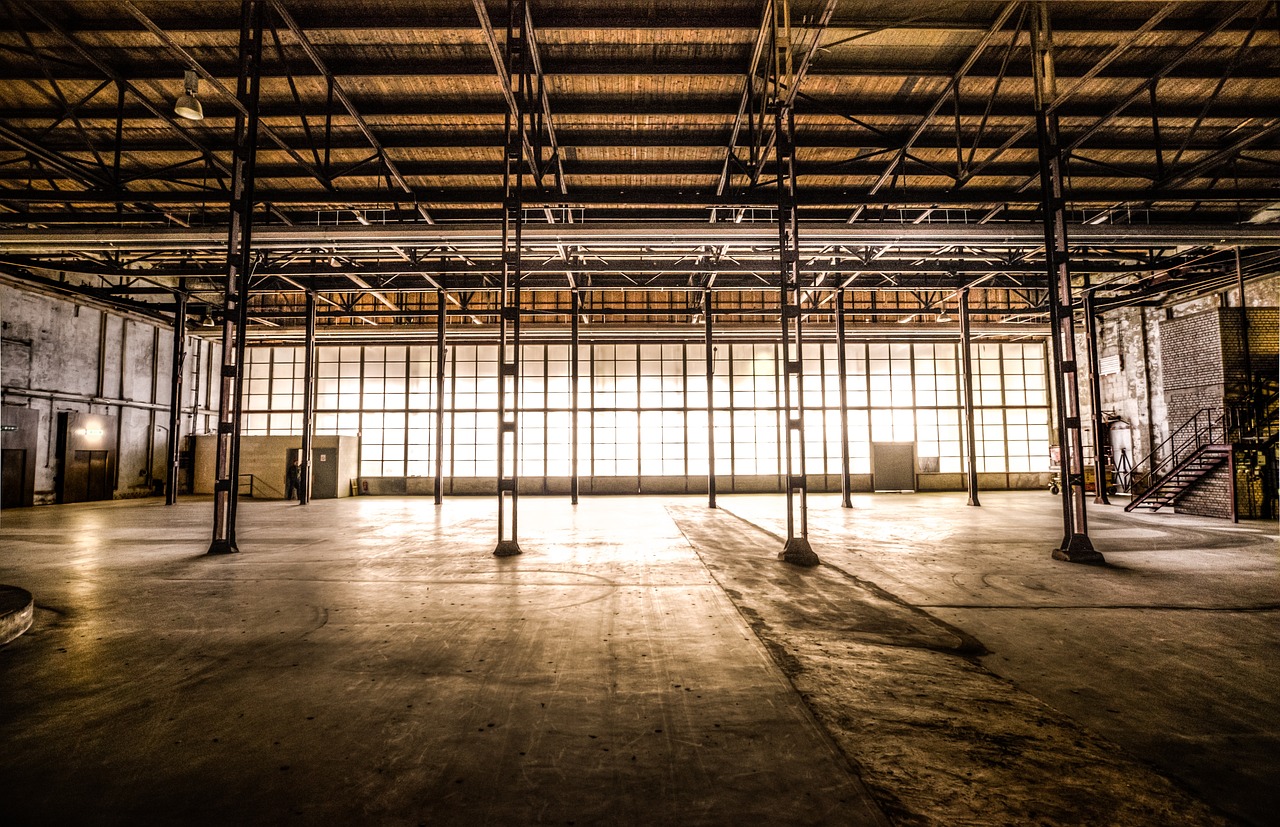
Collaborative Robots (Cobots)
In the rapidly evolving world of manufacturing, Collaborative Robots, or cobots, are emerging as a game-changer. Unlike traditional industrial robots, which often operate in isolation, cobots are designed to work alongside human operators. This synergy between human and machine is not just a trend; it's a revolution that's enhancing productivity and safety on the factory floor. Imagine a scenario where a robot seamlessly hands over a component to a worker, who then performs a delicate assembly task. This is the essence of cobots—they are here to assist, not replace.
One of the most remarkable aspects of cobots is their flexibility. They can be programmed and reprogrammed to perform a variety of tasks across different production lines, adapting to the needs of the operation. This adaptability is crucial in today’s fast-paced manufacturing environment, where change is the only constant. For instance, if a company needs to shift from producing one product to another, a cobot can be reconfigured in a matter of hours, saving time and reducing downtime.
Moreover, cobots are equipped with advanced sensors and artificial intelligence, allowing them to interact safely with human workers. They can detect when a person is nearby and adjust their movements to avoid collisions, making them ideal for environments where safety is paramount. This feature not only enhances safety but also fosters a more collaborative work environment, where humans and robots can coexist harmoniously.
In terms of cost-effectiveness, implementing cobots can be a smart investment for manufacturers. They typically require lower initial investments compared to traditional robotic systems and can lead to significant savings in labor costs over time. Additionally, their ability to operate continuously without fatigue means that production can run around the clock, further maximizing output.
As we look to the future, the role of cobots in manufacturing is expected to expand even further. With ongoing advancements in machine learning and AI, cobots will become smarter, more intuitive, and capable of handling increasingly complex tasks. This evolution will not only enhance their functionality but also open new avenues for innovation and efficiency in manufacturing processes.
- What are collaborative robots?
Collaborative robots, or cobots, are designed to work alongside human operators, enhancing productivity and safety in manufacturing environments.
- How do cobots improve safety?
Cobots are equipped with sensors that allow them to detect nearby humans, adjusting their movements to prevent accidents and ensuring a safer workplace.
- Are cobots expensive to implement?
Generally, cobots require a lower initial investment compared to traditional industrial robots, making them a cost-effective solution for many manufacturers.
- Can cobots be used for multiple tasks?
Yes, cobots are highly flexible and can be easily programmed to perform a variety of tasks across different production lines.

Artificial Intelligence Integration
In today's fast-paced manufacturing environment, the integration of Artificial Intelligence (AI) into robotic systems is not just a trend; it's a revolution. Imagine a factory floor where machines learn from their experiences, adapt to new tasks, and optimize their performance in real-time. This is the power of AI in robotics, transforming traditional manufacturing processes into smart, efficient operations.
AI enhances the capabilities of robots by enabling them to process vast amounts of data, make decisions, and even predict maintenance needs before they become critical. For instance, through machine learning algorithms, robots can analyze production data to identify patterns that humans might overlook. This capability not only improves efficiency but also reduces downtime, allowing manufacturers to keep their operations running smoothly.
Moreover, AI integration allows for a more flexible manufacturing process. Robots can now be programmed to switch between different tasks with minimal downtime. This adaptability is crucial in an era where consumer demands are constantly changing. For example, a robotic arm in an automotive factory can seamlessly transition from assembling one model to another, responding to shifts in market demand without the need for extensive reprogramming.
Additionally, the use of AI in robotics enhances quality control. By employing advanced vision systems powered by AI, robots can inspect products for defects with unparalleled accuracy. This means that less time is spent on manual inspections, and more products meet the stringent quality standards set by manufacturers. The result? A significant reduction in waste and an increase in customer satisfaction.
However, the integration of AI into robotics isn't without its challenges. Manufacturers must invest not only in the technology itself but also in training their workforce to work alongside these advanced systems. It's essential to create a culture of continuous learning, where employees are encouraged to develop their skills and adapt to new technologies. This investment in human capital ensures that the workforce remains relevant and empowered in the face of automation.
In conclusion, the integration of AI into robotics is reshaping the manufacturing landscape. By enhancing efficiency, flexibility, and quality control, AI-powered robots are not just tools; they are becoming critical partners in the production process. As we move forward, the collaboration between humans and machines will undoubtedly pave the way for a more innovative and productive manufacturing industry.
- What is AI integration in robotics? - AI integration in robotics refers to the incorporation of artificial intelligence technologies into robotic systems, enabling them to learn, adapt, and make decisions based on data.
- How does AI improve manufacturing efficiency? - AI improves manufacturing efficiency by optimizing production processes, predicting maintenance needs, and enabling robots to perform multiple tasks with minimal downtime.
- What are the challenges of implementing AI in manufacturing? - Challenges include the high costs of technology, the need for skilled personnel, and the necessity of ongoing training for the workforce to adapt to new systems.
Frequently Asked Questions
- What are the main benefits of using robotics in manufacturing?
Robotics in manufacturing offers numerous advantages, including enhanced efficiency, precision, and cost-effectiveness. By automating repetitive tasks, robots can significantly boost productivity, reduce errors, and ensure consistent quality in production processes.
- How do robots improve quality control in manufacturing?
Robots execute tasks with remarkable precision, which leads to better quality control. Their ability to perform repetitive tasks without fatigue minimizes the chances of human error, ensuring that products meet strict quality standards and reducing waste.
- What challenges do manufacturers face when implementing robotics?
Integrating robotics into manufacturing can be challenging due to high initial investment costs, the need for skilled personnel, and concerns about job displacement. Manufacturers must carefully weigh these factors and consider the long-term benefits of automation.
- How can the workforce adapt to the rise of robotics?
To thrive alongside automation, the workforce must adapt through training and reskilling. Workers need to develop new skills that complement robotic technologies, allowing them to work collaboratively with machines rather than being replaced by them.
- What are collaborative robots (cobots) and their role in manufacturing?
Collaborative robots, or cobots, are designed to work alongside human workers, enhancing productivity without replacing jobs. They assist in tasks that require precision and speed, allowing humans to focus on more complex and creative aspects of manufacturing.
- How is artificial intelligence changing the landscape of robotics in manufacturing?
The integration of artificial intelligence (AI) into robotic systems is transforming decision-making processes in manufacturing. AI enhances robots' capabilities, enabling them to analyze data, adapt to changing conditions, and optimize production processes for greater efficiency.

